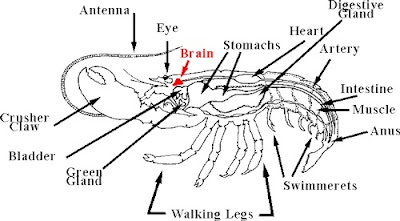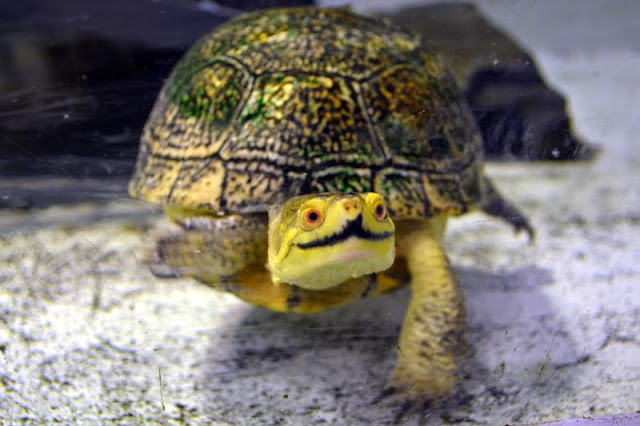In vibrant swatches of moving color, the flamboyant
cuttlefish have
made quite a splash on Central Wharf. For the past several
weeks, these small relatives of octopuses and squid have been living in the
Tropical Gallery, showing off their ability to instantly change color or using
their arms to “walk” across the exhibit floor. Only reaching 3 inches in
length, these little animals are a visitor, and staff, favorite!
 |
| The colorful flamboyant cuttlefish |
Native to the Indo-Pacific region, these particular
cuttlefish were raised at the Monterey Bay Aquarium and then
flown to Boston. While many aquaria across the U.S. showcase different cuttlefish species, there are very
few that have flamboyant cuttlefish on exhibit. That makes us very excited to show them off! And while it’s amazing to watch
these animals up close, we know it’s only for a short time. Like many of their
relatives, the flamboyant cuttlefish only live about a year, so we make sure
to enjoy them while we have them.
 |
| Hiding underneath a sea urchin |
As with other species, flamboyant cuttlefish mate
towards the end of their life. Males fight over the best mating dens and then settle in
to wait. A female will appear at the den’s entrance, mate and then fertilize
her eggs with the sperm packet the male has delivered to her. Once the fertilized eggs have been laid in well-protected spaces like ledges or crevices, the cuttlefish pass away. It’s always disappointing when it happens, but it’s a way of life in the cuttlefish world.
 |
| Mating behavior spotted on exhibit |
The current batch of flamboyant cuttlefish are nearing the end of their lifespan, but we have hopes for future generations! Our expert staff and volunteers have successfully bred and raised the young of other species of cuttlefish and were up for the challenge with this new species. We had kept our fingers crossed that the flamboyant cuttlefish would settle in and eventually breed…and
we weren’t disappointed. About a week ago…success!
 |
| Cuttlefish eggs...can you find the eye? |
Mating behavior was recently spotted in the exhibit and not long after, the
staff found several small, transparent eggs among the pieces of coral. The eggs were careful extracted from the exhibit and put into a gentle “tumbler”
behind the scenes. This simple piece of equipment allows the eggs to stay healthy and develop without the
worry of them being eaten by hungry sea stars or sea urchins while on exhibit.
 |
| Egg tumbler keeps the eggs gently moving |
To add to our
excitement, one egg, which was developmentally way ahead of the others, hatched! Smaller
than your pinky nail, this little newbie is growing behind the scenes with the
other eggs. Though it's small right now, you can tell this little guy has some big attitude!
 |
| Can you see it? |
 |
| Big attitude in a teeny, tiny body |
While we aren’t sure how many of this next generation will
survive, we have our fingers crossed that it goes well. Given our past track
record with other cuttlefish, we're hopeful what we can raise this new batch of
flamboyant cuttlefish and showcase them in the exhibit once they get bigger. But for
now, the staff and volunteers are working hard to keep these little colorful
bundles healthy, and their sights on sharing these amazing animals with future Aquarium visitors!


















































